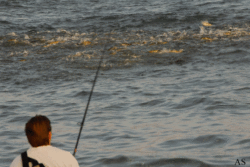TIMING
The first rule of fishing is to find the fish! If you are fishing in a fishless place, you will have a fishless day. You caught, or didn’t catch, exactly what you fished for.
Ocean fishing is a good example. Millions of fish live in schools that are tied to the currents, tides, temperature, light, and structure. Their food sources are also entwined with these factors. If you don’t understand them, you will not catch fish. If you learn how these factors impact fishing, you will never get skunked. A slack or dead tide means dead fishing. Once the tide begins to move, so do the bait fish and then the fish that eat them. 
Hatches occur at certain times. Water temperature and light are major catalysts. Some hatches last a long time while others are brief. If you hit it right, catching fish is awesome. If you miss the hatch, then you just go fishing and not catching.
Polaroid glasses, electronics, and crowds of fishermen help us see locate and find fish. Once you are on the fish, you need to figure out what they are eating.
Many fishermen feel early morning is best. Others prefer sunset. Nighttime is best for some fishing. Each species f fish has its preferences of foods and feeding behaviors. Learn these and you are on your way.
Years ago, I went to a lake in Canada. Walleye Heaven!!! After a few days of more fishing than catching, everyone went back to camp. “I came here to fish!” As the sunset, I was casting and drifting back to camp. The water was only a few feet deep when I caught my first fish. Soon I had a limit and was throwing them back. Every evening, the bite was on for about 3 hours. If you snoozed, you missed the bite!
It is always time to go fishing!
Montana Grant
For more Montana Grant, take time to hook up at www.montanagrantfishing.com. 